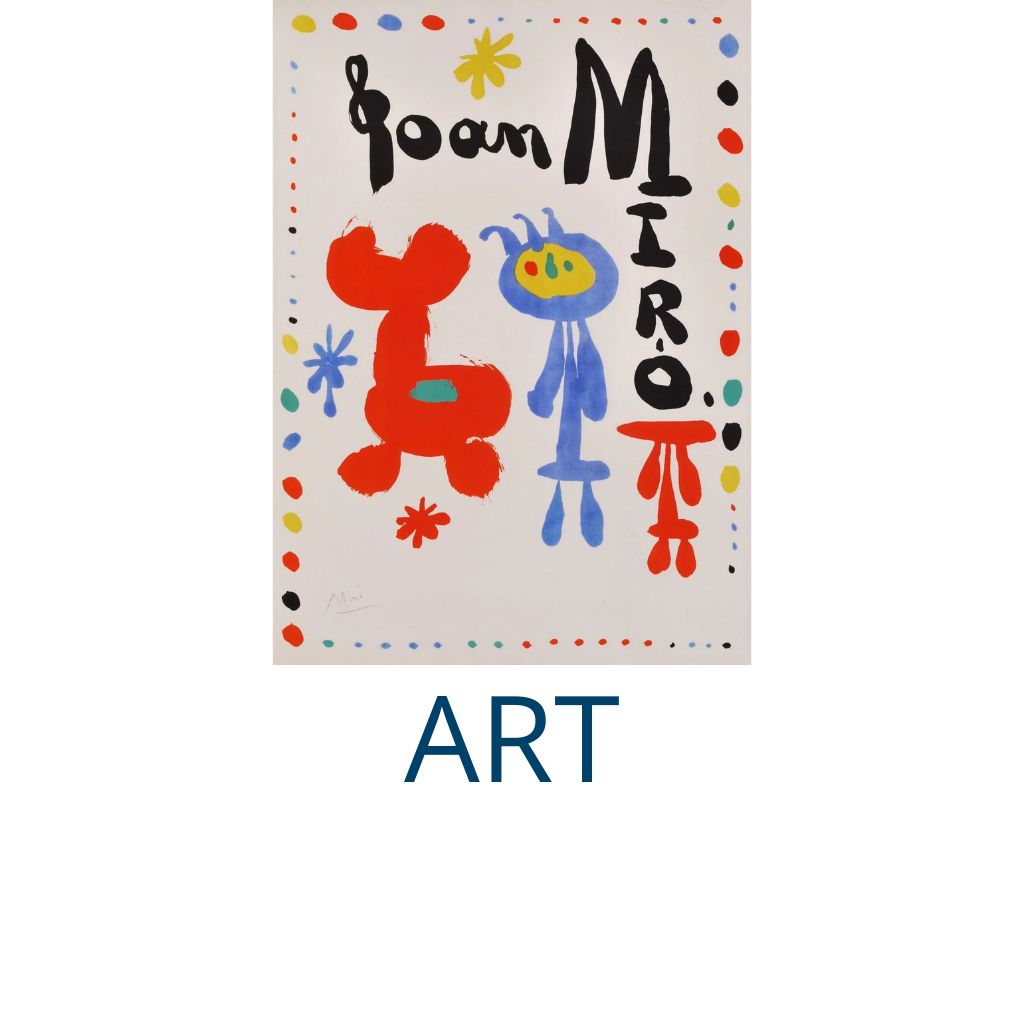
A History of Vintage Travel Posters
Share
Travel posters are more than advertisements for far-off destinations; they are vibrant windows into the past, encapsulating the spirit of adventure, innovation, and cultural allure of bygone eras. For collectors, these posters are prized not only for their artistic value but also for the stories they tell about the evolution of travel and design. This article delves into the fascinating history of vintage travel posters, exploring their origins, golden age, artistic styles, and enduring appeal to collectors today.
The Beginnings of Travel Posters
Early Transportation Advertising (19th Century)
The history of travel posters dates back to the mid-19th century, when advances in transportation revolutionized how people moved across cities, countries, and continents. The invention of the steam engine and the expansion of railroads marked the beginning of mass travel, and railway companies quickly recognized the need to market their services.
Early posters were often simple and text-heavy, listing schedules, destinations, and fares. However, as competition between railway companies grew, the need for visually striking advertisements became apparent. The advent of lithographic printing in the 1870s allowed for vibrant, large-scale posters that combined bold colors and artistic illustrations, ushering in a new era of visual marketing.
The Rise of Leisure Travel
As the Industrial Revolution gave rise to a growing middle class, leisure travel became a popular pastime. This shift was reflected in the content of travel posters, which began to emphasize the pleasures of exploration, relaxation, and escapism. Destinations such as seaside resorts, mountain retreats, and cultural landmarks were romanticized to entice travelers.
Railway companies in Europe, such as the British Great Western Railway (GWR) and the French Chemins de Fer, were among the first to commission artistic travel posters. These early works laid the groundwork for the golden age of travel posters in the 20th century.
The Golden Age of Travel Posters (1900–1950s)
Art Nouveau Influence
At the turn of the 20th century, the Art Nouveau movement had a significant impact on travel poster design. Characterized by flowing lines, intricate patterns, and a focus on nature, Art Nouveau posters were as much about beauty as they were about advertising. Artists like Eugène Grasset and Alphonse Mucha brought a sense of elegance and sophistication to early travel posters, often depicting idyllic scenes of destinations like the French Riviera or the Alps.
The Role of Railways and Shipping Lines
The expansion of railway networks and the popularity of luxury ocean liners further propelled the demand for travel posters. Companies like the London and North Eastern Railway (LNER) and Cunard Line hired renowned artists to create visually stunning advertisements that highlighted the convenience, comfort, and adventure of their services.
For example, Cassandre's 1927 poster for the Normandie ocean liner, with its bold geometric design and Art Deco aesthetic, remains an icon of this era. These posters captured the imagination of the public, promising glamour and luxury in travel.
Air Travel and Modernist Design
The 1920s and 1930s saw the rise of commercial aviation, and airlines began to commission travel posters to promote their routes. This period also marked the transition from Art Nouveau to Art Deco, a style characterized by sleek lines, symmetry, and bold colors.
Posters for airlines like Imperial Airways, Pan American World Airways (Pan Am), and Air France featured streamlined aircraft soaring over exotic landscapes, conveying a sense of progress and modernity. These posters not only advertised destinations but also celebrated the technological marvel of flight.
Themes and Styles in Vintage Travel Posters
Destination as Fantasy
One of the defining characteristics of vintage travel posters is their romanticized portrayal of destinations. Artists used vibrant colors and idealized imagery to evoke feelings of wonder and desire. Coastal resorts were depicted with pristine beaches and azure seas, while alpine destinations showcased snow-capped peaks and charming chalets.
Cultural Allure
Many posters emphasized the unique cultural aspects of a destination, such as architecture, festivals, or local traditions. For instance, posters for Egypt often featured the Pyramids and the Sphinx, while those for Japan highlighted cherry blossoms and Mount Fuji. These designs appealed to travelers’ curiosity and yearning for cultural enrichment.
Dynamic Typography
Typography played a crucial role in travel posters, with artists using bold and creative lettering to complement the visuals. The text was often integrated seamlessly into the composition, enhancing the overall impact of the design.
Artistic Movements
Travel posters drew inspiration from various artistic movements, including:
- Art Nouveau – Flourishing lines and decorative motifs.
- Art Deco – Bold geometry and modernist aesthetics.
- Bauhaus – Minimalist and functional design.
- Surrealism – Dreamlike imagery for exotic locales.
The Decline of the Travel Poster
By the mid-20th century, the prominence of travel posters began to wane. Several factors contributed to their decline:
1. The Rise of Photography – Advances in photography and printing technology shifted advertising trends toward photographic imagery, which was considered more modern and realistic.
2. Mass Media – The advent of television and glossy travel magazines offered new ways to promote tourism.
3. Standardization – As air travel became more accessible, airlines and tourism boards adopted more generic, corporate marketing strategies.
Despite their reduced commercial importance, vintage travel posters retained their artistic value and began to attract the attention of collectors and art enthusiasts.
Why Collectors Love Vintage Travel Posters
Artistic Value
- Vintage travel posters are celebrated as works of art, combining skilled illustration, typography, and design. Many were created by renowned artists like Adolphe Mouron Cassandre, Roger Broders, and Leonetto Cappiello, whose works are highly sought after today.
Cultural and Historical Significance
- Each poster is a time capsule, reflecting the cultural trends, technological advancements, and societal aspirations of its era. Collectors appreciate the way these posters document the evolution of travel and advertising.
Rarity and Exclusivity
- Original travel posters were often printed in limited quantities and were intended for short-term use, making surviving examples rare and valuable. Posters in excellent condition, particularly those by famous artists or for iconic destinations, can command high prices at auctions.
Aesthetic Appeal
- The vibrant colors and timeless designs of vintage travel posters make them ideal for home and office décor. They evoke a sense of nostalgia and wanderlust, serving as both conversation pieces and personal expressions of one’s love for travel.
Notable Artists and Posters
Roger Broders
- Known for his posters of the French Riviera, Broders’ work epitomizes the Art Deco style. His use of clean lines, vibrant colors, and idyllic compositions captures the allure of Mediterranean travel.
Adolphe Mouron Cassandre
- Cassandre’s posters, such as L’Atlantique and Normandie, are celebrated for their innovative use of geometry and typography. His work remains a cornerstone of modern graphic design.
E. McKnight Kauffer
- Kauffer’s posters for British railways and airlines feature bold, abstract designs that showcase his mastery of modernist aesthetics.
David Klein
- Klein’s posters for Trans World Airlines (TWA) in the 1950s and 1960s are iconic examples of mid-century modern travel art, featuring vibrant depictions of cities like New York and Paris.
Tips for Collecting Vintage Travel Posters
1. Research and Knowledge
Understanding the history, styles, and artists of vintage travel posters is crucial for making informed purchases. Books, auction catalogs, and online resources are valuable tools for collectors.
2. Authenticity
Verify the authenticity of a poster before buying. Look for details such as printer marks, paper quality, and condition. Original posters are often printed on thick paper using lithographic techniques.
3. Condition and Restoration
The condition of a poster significantly affects its value. While some wear is expected in vintage posters, extensive damage or poor restoration can diminish their appeal. Professional restoration can enhance a poster’s appearance while preserving its authenticity.
4. Provenance
Posters with a clear provenance or connection to a significant artist, destination, or event tend to be more desirable.
5. Display and Preservation
Proper framing and storage are essential to protect vintage posters from fading, moisture, and physical damage. UV-resistant glass and acid-free materials are recommended for framing.
Modern Appeal and Reproductions
The resurgence of interest in vintage travel posters has led to a thriving market for reproductions. While these lack the rarity and historical value of originals, they offer an affordable way for enthusiasts to enjoy the aesthetic charm of classic designs.
Contemporary artists and designers continue to draw inspiration from vintage travel posters, creating new works that pay homage to this rich tradition.
Conclusion
The history of vintage travel posters is a journey through art, culture, and the evolution of travel itself. From their humble beginnings as railway advertisements to their status as highly collectible works of art, these posters capture the imagination and inspire wanderlust. For collectors, they are more than decorative pieces—they are tangible connections to the golden age of travel and a celebration of human creativity and ambition.
Whether displayed on a wall or preserved in a collection, vintage travel posters continue to transport us to a time when travel was not just a journey but an experience to be cherished and celebrated.
Note on Featured Image - https://www.railwaymuseum.org.uk/
London & North Eastern Railway (LNER) poster advertising rail services to the Norfolk Broads. Artwork by Septimus E Scott.




